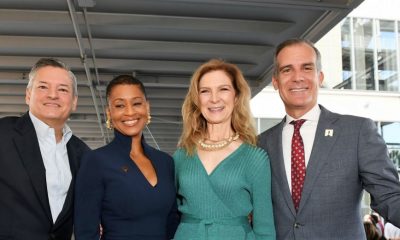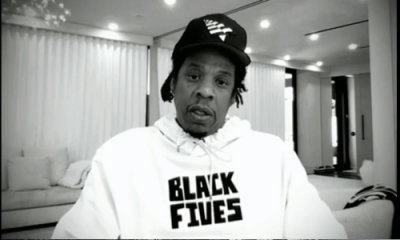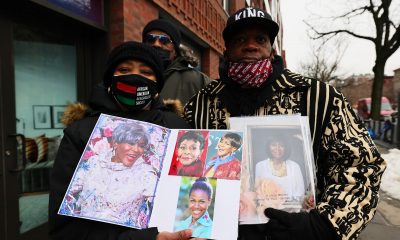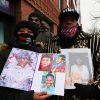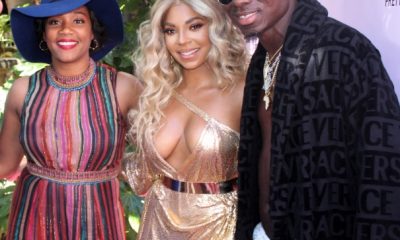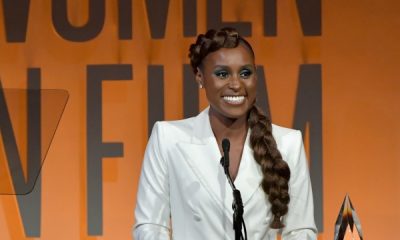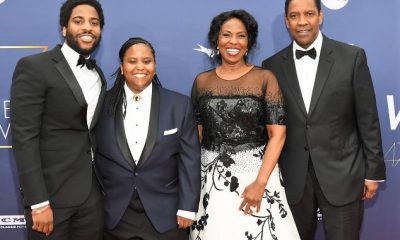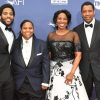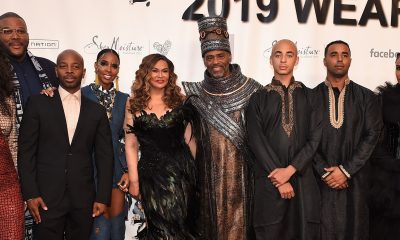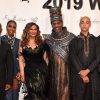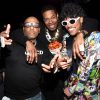Bloggies
Presidents, Dignitaries and Celebrities Mark the Opening of African-American History Museum
WASHINGTON — President Barack Obama led the way in a ceremony held over the weekend to mark the opening of the Smithsonian’s National Museum of African American History and Culture, a project that took more than 100 years to bring to fruition.
Joined by former U.S. Presidents George W. Bush and Bill Clinton, dozens of members of Congress, prominent African-American clergy and community leaders, and celebrities, including Oprah Winfrey and Will Smith, the President during his remarks put into context the significance of the museum and the role of African Americans in American’s history.
“This national museum helps to tell a richer and fuller story of who we are,” President Obama told the more than 7,000 invited guests at the ceremony. “It helps us better understand the lives, yes, of the President, but also the slave; the industrialist, but also the porter; the keeper of the status quo, but also of the activist seeking to overthrow that status quo; the teacher or the cook, alongside the statesman. And by knowing this other story, we better understand ourselves and each other.”
President Obama spoke on a recurring theme of the speeches made during the opening ceremony – that America’s history of slavery and segregation is very much a part of the complete history of the nation.
“It (America’s history) binds us together,” President Obama continued. “It reaffirms that all of us are America — that African-American history is not somehow separate from our larger American story, it’s not the underside of the American story, it is central to the American story. That our glory derives not just from our most obvious triumphs, but how we’ve wrested triumph from tragedy, and how we’ve been able to remake ourselves, again and again and again, in accordance with our highest ideals.”
The museum’s opening comes at a time when racial tensions in the U.S. are at a heightened state with the fatal police shootings of Terence Crutcher in Tulsa and Keith Scott in Charlotte. Such racial tension was acknowledged by President Obama, who said the museum may be able to help white visitors understand the pain and anger of demonstrators in Ferguson and Charlotte.
The museum, President Obama said, may also help black visitors “appreciate the fact that not only is this younger generation carrying on traditions of the past but, within the white communities across this nation, we see the sincerity of law enforcement officers and officials who, in fits and starts, are struggling to understand, and are trying to do the right thing. “
President Bush, who has spent part of his post-presidency days trying to repair his image with African-Americans, including his admitted regrets with the response to Hurricane Katrina in 2005, also spoke at the ceremony, saying that museum serves a reminder that the US does recognize its past policy mistakes.
“It shows our commitment to truth,” said President Bush, who signed the bill authorizing the construction of the African-American History Museum in 2003. “A great nation does not hide its history. It faces its flaws and corrects them.”
The effort to get the museum built began in 1915 when African-American Civil War veterans began looking for a way to commemorate the black experience.
The museum’s opening ceremony featured dance and musical performances that celebrated black culture. Also delivering speeches on that day were Oprah Winfrey, who donated $20 million to the museum, Will Smith, Supreme Court Chief Justice John G. Roberts Jr. and Congressman John Lewis, who co-sponsored legislation authorizing its construction.
“As long as there is a United States of America, now there will be a National Museum of African American History and Culture,” said Lewis, who pushed for museum in Congress for more than 15 years. “There were some who said it couldn’t happen, who said, ‘you can’t do it.’ But we did it. We did it.”
The 400,000 square-foot museum sits on five acres near the National Mall in Washington. The museum is home to more than 36,000 artifacts that museum curated to “memorialize, educated and share the unvarnished truth” of America’s past.
The exhibits featured during the inaugural opening include several history galleries; the museum’s centerpiece on slavery; exhibits about the post-slavery, Civil War and Reconstruction eras and the changes in America from 1968 and beyond, including the Civil Rights movement.
Cultural galleries are also featured at the museum that highlights the contributions from African Americans to music, style, food, craftsmanship and language. There are also two additional galleries for art, theater, film and television.
On a tour of the museum, visitors receive the complete African-American experience, — from the dark slave ships and shackles, to signs and other memorabilia from the Jim Crow days of segregation. The museum also has on display the casket of the Emmett Till, who was murdered in 1955 for whistling at white woman in Mississippi.
There are also artifacts from some of the more triumphant moments of African-American history, including a statue of NBA legend Michael Jordan, rock n roll legend Chuck Berry’s classic Cadillac and bar grips used by Gabby Douglas at the 2012 Olympics.
The museum was officially open for visitors after President Obama rang the historic Freedom Bell, from the First Baptist Church in Williamsburg, Virginia, with the help of Ruth Odom Bonner, was the daughter of Elijah Odom, a man born a slave in Mississippi.
Want to go?
You will need pre-reserved, timed tickets to enter the museum. However, tickets may be sold out through the end of the year. If you want to visit in 2016, you can obtain up to four same-day passes from the visitor services staff each day at 9:15 a.m., starting Monday. Tickets for 2017 have not yet been made available.




